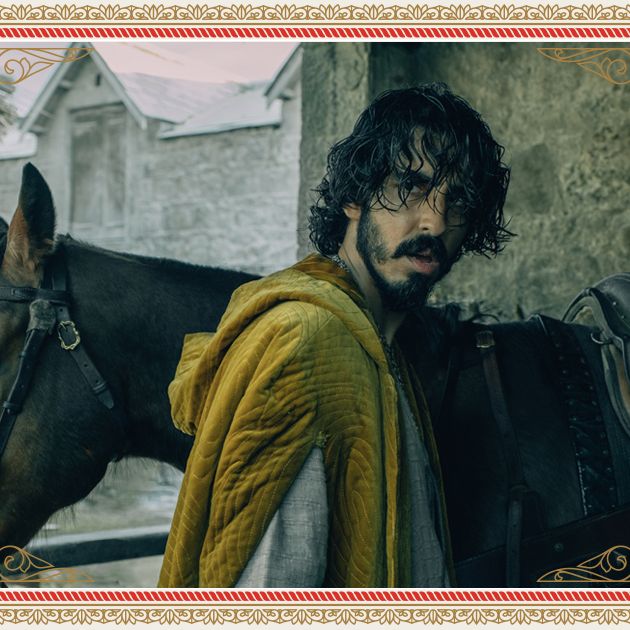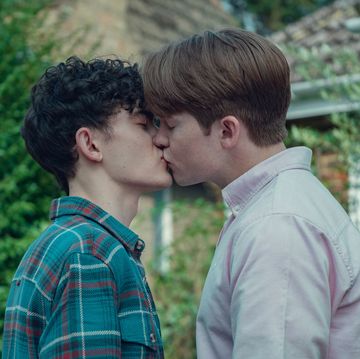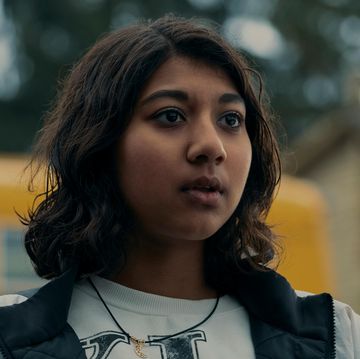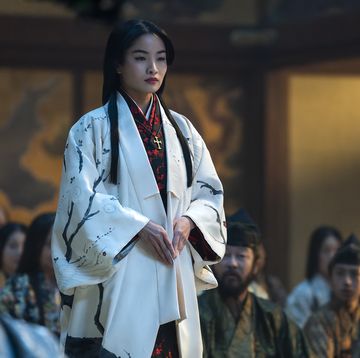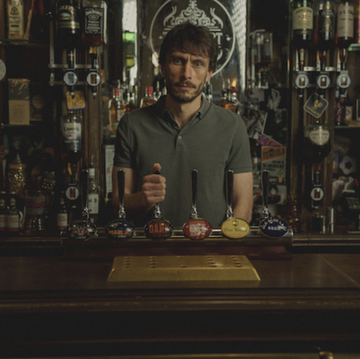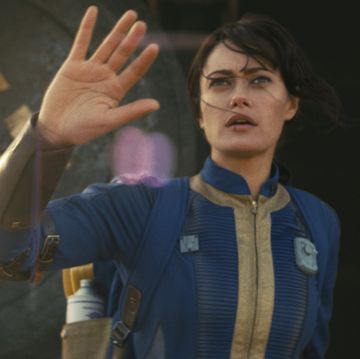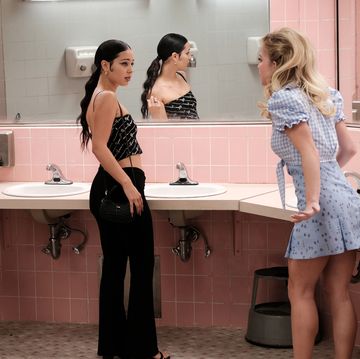I think I could chart my entire life in adaptations of Arthurian lore. There was The Sword in the Stone and A Kid in King Arthur’s Court in elementary school, First Knight during a seventh grade slumber party, and Monty Python and the Holy Grail when I was a sophomore in high school. I read Mary Stewart’s Merlin quartet when I was far too young, alongside The Mists of Avalon. I laugh-cried over King Arthur: Legend of the Sword just a few years ago. The list goes on and on. This classic myth is so widely told that the characters have become shorthand (Merlin the magician; Lancelot the knight; Guinevere the queen). They inhabit our public consciousness so thoroughly, they don’t need explanation.
I’m sure there are ideas of what Arthurian legend canon should be—and like so many mythologies, it probably starts with where you are, what version of the story you heard first, and what version historians tell us came first. Despite their pop culture permeation, Arthurian adaptations—film, TV, books, or otherwise—tend to imply that very specific people can be centered and exist inside their walls.
In the mid-‘80s, I was born to Indian immigrant parents in a very small southern town. I grew up with the mythologies of my parents inside the house, paired with the mythologies of America in the turn of 20th century. That meant VHS tapes of the Mahabharata alongside repeated viewings of The Sword in the Stone. I read the Krishnavatara series and A Connecticut Yankee in King Arthur’s Court at the same time. I loved all these stories of good and evil, of ordinary people put in extraordinary circumstances. But when we played Knights and Kings, it was The Sword in the Stone that my friends understood. It was Thomas Ian Nicholas posters that our walls shared. There are no little brown kids in The Sword in the Stone.
Back in 2018, two friends of mine, Jenn Northington and Swapna Krishna, mentioned that they wanted to pull together an anthology of gender-bent, race-bent, and LGBTQIA+-inclusive Arthurian retellings and asked if I would contribute. My answer was an enthusiastic, caps-locked, “YES.” I know people’s hackles will raise at that word “inclusive.” But I don’t know how to explain to someone who has never sat on the outside what it feels like to always be looking in, unable to participate. This was my chance to participate. I started working on a story about Merlin coming back to contemporary society to find Arthur. Only, in my story, Arthur was now Arjun, a young British Indian man unburdened with his history, but understanding of the fact that he has a destiny. It was a deliberate choice on my part: I wanted to include someone who doesn’t usually get to be the king in these stories. I wanted to create a character familiar to my story, who was shaped by a history like mine, who could be destined for something more.
In early 2020, I had just turned in the final draft of “Once (Them) and Future (Us),” for the Sword Stone Table anthology. I was struggling with the historical and cultural baggage that comes with placing an Indian man at the forefront of an Arthurian myth given India’s colonial history. Then the trailer dropped for The Green Knight, David Lowery’s adaptation of the medieval poem, and in the lead role of Sir Gawain? Dev Patel. All of a sudden, the piece I was working on was going to be paralleled by a very visible, live-action example. To say I was ecstatic would be an understatement. Just a decade ago it was reported that a woman of Pakistani descent was deemed “too brown” to be cast as a hobbit. Now, the lead of one of the most famous stories of all time is a brown man. Is there a word for a slow-motion whiplash? That’s how I feel.
Mythologies bind us together. They are common stories that we learn from and experience that help make us who we are. When those tales tell you that only the chosen few deserve to have their stories told, you believe that. But that changes when those chosen few are expanded into something more. I was finally able to watch The Green Knight recently. It’s beautiful, haunting, and gut-wrenching. Dev Patel is astonishing in it—never afraid of being awful or vulnerable. His Gawain is not the chivalrous hero we might recognize from the poem; he is complicated and trying. Lowery’s version of the story is simultaneously one we know and one we don’t, but through it all, Patel’s Gawain is centered, and it’s his story. Putting Patel in that position—in the middle of the narrative we are experiencing and relating to—adds a layer of surprising connection that I’m still not sure how to articulate. There’s an unexpected ease to watching it.
This isn’t about the validity of representation, which we know does some good but should not be used as the only tool to fix a broken system; it’s about something inside of the feeling that representation can provide. There is comfort in the familiar, and Dev Patel’s deserved inclusion in this cast provides a level of comfort I’m not used to. It’s provided some kind of fundamental shift in my relationship to the material.
Sword Stone Table: New Voices, New Legends was released in July, less than three weeks before The Green Knight came out in theaters. The goal of the anthology was always to mix the comfortable and novel, whether it’s the perspectives you find comfortable and the myths you find new, or the myths you find comfortable and perspectives you find new. Such retellings can take us to that space of the unknown and known. And I want to see more of that. The truth is, all I want is more story—the stories I know, the stories I don’t. And the stories I thought I knew, given new life when someone who looks like me takes my hand and invites me in.
